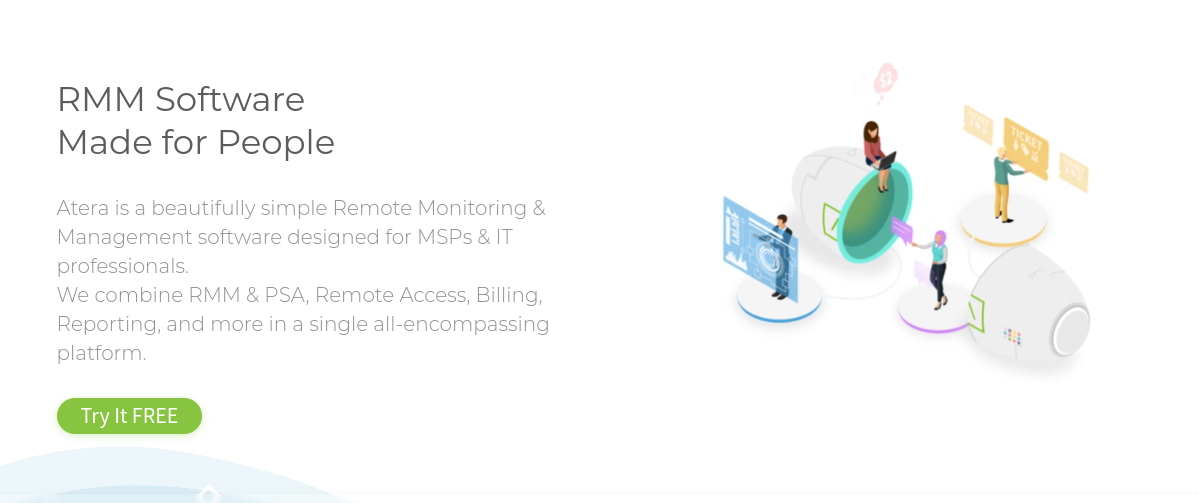Finding the right server hardware configuration and running it successfully is only half the battle.
After that, it is necessary to constantly monitor the configuration and audit logs so that all services, applications, and services work correctly and there are no compliance issues.
Timely responding to failures and security threats allows you to avoid significant productivity and financial losses. Without monitoring, it is difficult to immediately determine whether the server is faulty or some of its services are not working properly.
Server configuration monitoring is collecting and analyzing data on the current configuration of the servers and sever assets. For this, special tools and services are used, the functionality of which is somewhat different from each other.
Some programs for Windows or Linux are designed only for monitoring free memory and server CPU load, while others are suitable for advanced monitoring of corporate and enterprise servers.
Why do you need server configuration monitoring?
The main objective of monitoring server configuration is to monitor any changes in the benchmark or baseline configuration of the server, however, often it also includes monitoring performance, memory occupancy, and functionality in real-time.
The most important thing of configuration monitoring is detecting any changes in the configuration and correlating them to performance metrics. This helps in detecting problems even before users experience them. For example, if you reduce the free space on the server’s SSD to a critical level, you can have time to solve the problem.
Suppose this is not done on time (which most often happens without monitoring utilities). In that case, the web service, application, site, or data may suffer: the site, service, and applications will stop working for all users, and data may be lost. It is challenging to estimate financial losses in this case – this is fraught not only with an outflow of users and buyers but also with long-term trust and reputation issues.
Server configuration monitoring includes the analysis of the following data:
- Changes in configuration
- Server logs
- Processor performance
- Memory
- Status of storage drives connected to the server
- The general condition of the equipment
- Status of assigned tasks
- Traffic flow
- Outside temperature and cooling system status.
Based on this data, you can monitor free and occupied storage space, equipment status (active or not), traffic volume, CPU load, device temperature, and performance of individual storage elements (for example, an active cooling system on corporate models).
All information is analyzed and displayed in real-time. Tools and services with a user-friendly interface have an alert mode, so the system administrator will immediately notice any error.
Monitoring of servers is carried out using special tools or services. Most often, monitoring services are used for round-the-clock monitoring. Following are some of the best and widely renowned server configuration monitoring and auditing tools:
SolarWinds
SolarWinds’ server configuration monitor is a tool that can be used to detect any changes to the benchmark or a baseline configuration on both Windows and Linux servers. It not only allows you to compare different configuration changes in real-time and also to detect who is making changes and how is it affecting server performance. SolarWinds also allows you to monitor server hardware and applications.
ManageEngine
ManageEngine’s OpManager is a real-time monitoring tool that allows you to monitor over 2000 performance metrics. It also allows you to monitor both real and virtual servers including VMs and Hyper-V. The OpManager also gives you the option to set multi-level thresholds which can be used to get an alert if there are any major changes in server configuration.
Netwrix
Netwrix is a network auditing tool that monitors your network and detects security threats. It allows you to mitigate weaknesses through its automated risk assessment. Netwrix also makes the compliance audit easier by monitoring your data and who has access to it and if there are any critical issues you receive real-time alerts.
Datadoghq
Datadoghq is a platform with a wide range of different tools for monitoring servers including infrastructure and performance monitoring. It also provides you with log management and sensitive data monitoring features to solve compliance issues.
Datadog also has a number of security management options and an error tracking feature to provide real-time alerts of any changes being made to the network or security issues.
Opsview Monitor
Ospview Monitor is a monitoring solution that monitors your operating systems, networks, email servers, cloud, VMs, containers, databases, and applications. It supports plugins from Nagios exchange which gives you extra monitoring options. Opsview can be easily integrated if you are using a ticketing and notification system through its API.
Atera
Atera is a remote monitoring and management software that allows you to monitor the network in real-time. It allows you to run instant network scans and automate administrative and maintenance tasks. Altera allows you to manage contracts and SLAs. Moreover, it also allows you to integrate QuickBooks, Xero, and Freshbooks.

Chef.io
Chef is a policy-based configuration management solution that allows you to define configurations and policies as code and automate drift elimination. Chef automate can be used to validate these policies and with Chef infra you can easily enforce them.

Choosing the Server Configuration Monitoring and Auditing Tools
When choosing tools and services for monitoring or auditing servers, it is important to consider several factors. Here we will look at three of the most important factors:
- The first is the operating system the tool is designed for. For example, some tools can only run on Windows Server 2016 , although they monitor any hardware, including Linux servers.
- The second choice factor is the availability of a convenient management and control interface. It is much more convenient if the monitoring service has an alert system and visually shows which storage element is working properly and which has an error.
- The third factor is the functionality and number of monitored parameters. Some services can be supplemented using analytics and log monitoring systems.
Most enterprise monitoring services are compatible with common business servers such as Dell PowerEdge, HP ProLiant, IBM eServer xSeries, Dell PowerEdge Blade, HP BladeSystem, VMware vSphere, and others but sometimes, it is rational to choose them for a narrower specialization. For example, some solutions are more suitable for monitoring databases while others are more suitable for real-time configuration monitoring.
Final Words
There are a wide number of options when it comes to choosing a server or tool monitoring server configuration and auditing. It is important to consider your requirements such as infrastructure while choosing the tool. Moreover, often system administrators are biased about those tools with which they have previously worked with. So if you are thinking about switching to a new tool it is preferred to choose a tool with a shallow learning curve.



